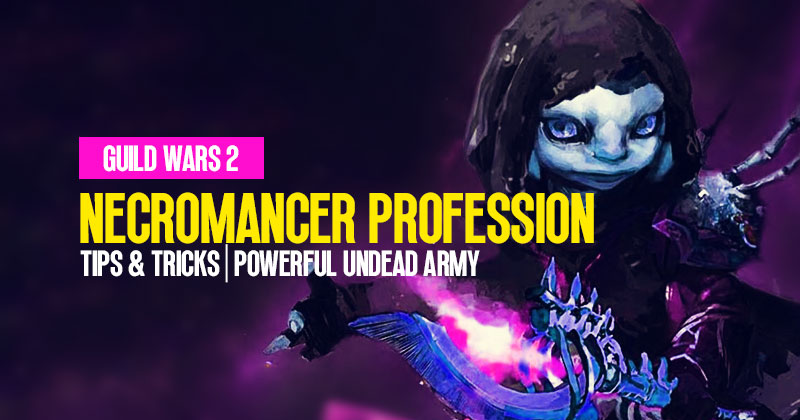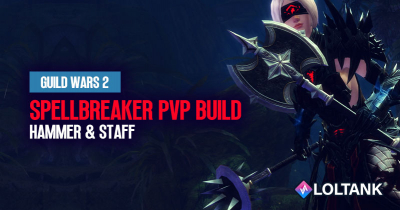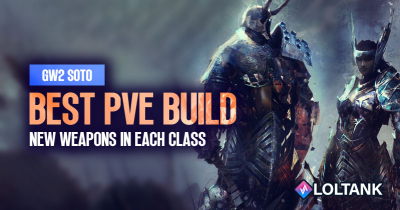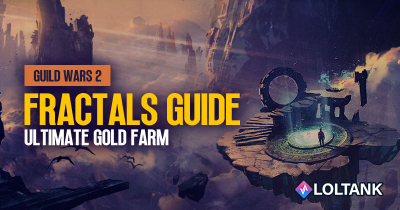Guild Wars 2 Necromancer Profession Guide: Tips & Tricks To Beginner | Powerful Undead Army
- Gertie
- Share
- Guild Wars 2
- 10/23/23
- 1911
In the vast universe of Guild Wars 2, the Necromancer stands out as an avatar of death, drawing from shadowy forces to command and conquer. We will offers a detailed overview of this intriguing profession, ensuring both newcomers and veterans are well-equipped to harness its might. From their unique mechanics, diverse skills, weapon choices, and elite specializations, this guide offers insights into mastering this unholy caster and becoming a force to be reckoned with in Tyria.
- Professional Mechanic
- Playstyles
- Pros and Cons
- Trait Lines
- Weapon Choices
- Utility Skills
- Elite Specializations
- Leveling Tips
- Gear Stats and Runes

↖ Professional Mechanic
The Necromancer's core mechanic is Death Shroud, a secondary health bar that grants access to powerful abilities. Here's how it works:
- Life Force: Your Death Shroud bar fills as you use skills and abilities.
- Activating Death Shroud: Once you have enough life force, you can activate Death Shroud, granting you a new set of potent abilities.
- Secondary Health Bar: Death Shroud acts as a secondary health bar but drains quickly within the shroud.
- Exiting Death Shroud: Taking damage will remove your Death Shroud more quickly.
- Managing Life Force: It's generally best to enter Death Shroud with a higher amount of life force to maximize its effectiveness.
↖ Playstyles
Necromancers are known for their durability, thanks to their Death Shroud ability, which acts as both a powerful DPS cooldown and an extra health bar. When combined with minions to distract enemies, they excel at handling powerful foes in open-world content. In group settings, necromancers shine as damage dealers, thanks to their abundance of conditions and aggressive minions. In PvP, core necromancers offer strong defenses, mobility, and are a solid choice for new players.
↖ Pros and Cons
| Mode | Pros | Cons |
|---|---|---|
| PvE |
|
|
| PvP |
|
|
| WvW |
|
|
| Roaming |
|
|
↖ Trait Lines
Necromancer trait lines offer diverse playstyles, focusing on different aspects of the profession. Here's an overview:
- Spite: Emphasizes direct strike damage.
- Curses: Centers on condition damage (DoT).
- Death Magic: Enhances defenses and minion abilities.
- Blood Magic: Provides lifesteal, sustain, and ally assistance in downed states.
- Soul Reaping: Augments your Shroud abilities and condition application.
↖ Weapon Choices
Necromancers have a wide range of weapons to choose from, each offering a different playstyle:
- Main Hand: Staff, Axe, Dagger, Scepter.
- Off Hand: Dagger, Focus, Warhorn.
Beginners are recommended to pair the Axe and Focus with a Staff, while advanced players might lean towards the Scepter and Dagger combined with a Staff.
↖ Utility Skills
Necromancer utility skills vary, from transferring conditions to creating powerful AoEs. Key categories include:
- Corruption Skills: Inflict conditions on oneself but can be turned against enemies.
- Well Abilities: Potent AoE skills aiding allies and harming foes.
- Signet Abilities: Provide passive boosts and stronger active effects.
- Spectral Skills: Defensive skills enhancing survivability.
- Minion Skills: Summon creatures to aid in battle.
The wide range of utilities allows for versatile builds, especially leaning towards condition damage.
↖ Elite Specializations
Reaper: Transforms Necromancer into a melee class, emphasizing chilling effects.
- Scourge: Removes the traditional shroud, introducing shades and barriers.
- Harbinger: An aggressive spec, sacrificing health for amplified damage.
Each elite specialization offers distinct gameplay, further diversifying the Necromancer's role.
↖ Leveling Tips
When leveling a Necromancer, consider these recommendations:
- Minion Skills: Prioritize unlocking minion skills first to make leveling easier. Minions can tank and distract enemies.
- Soul Reaping Trait Line: Choose the Soul Reaping trait line early on, as it enhances your Shroud abilities, where a significant portion of your damage comes from.
While leveling, avoid using the dagger main hand, as it requires close-range combat. Focus on other weapons to maintain a safer distance from your enemies.
↖ Gear Stats and Runes
The Necromancer's gear stat choices can vary based on your preferred playstyle:
- Berserker: For power-based strike damage builds.
- Viper's: Ideal for condition damage builds.
- Celestial: A versatile choice for hybrid builds that enhances overall stats.
Consider using Rune of Nightmares for condition damage builds and Rune of the Scholar for power-based builds. Experiment and find the combination that works best for you.
Previous: Guild Wars 2 Thief Profession Tips and Tricks!
Conclusion:
skills that provide healing, damage, and survivability. Their ability to manipulate the corpses of fallen enemies adds a grisly but effective element to their dominance over the forces of darkness. With a blend of offense, defense, and utility, they truly epitomize the balance of life and death. Harnessing their powers guarantees a display of dominance in the battlefield.
Most Popular Posts
- Guild Wars 2 Open World PvE Builds: Ranking & Tier List For 2023
- Guild Wars 2: Top 4 Best Maps To Farm Gold in 2023
- Guild Wars 2 Wizard's Vault Items: Tier List For Best and Worst
- How to get more gold with unidentified gear in Guild Wars 2, 2023?
- How to Farm Gold Weekly with Imperial Favors | Guild Wars 2?
- How to Get Research Notes Quickly and Efficiently in Guild Wars 2, 2023?
Popular Category Lists
- Path of Exile / (873)
- Diablo IV / (702)
- Runescape / (344)
- New World / (172)
- WoW Classic SoD / (171)
- Guild Wars 2 / (159)
- Elder Scrolls Online / (138)
- FFXIV / (135)
- World of Warcraft / (65)
- WOW Classic / (43)
- Elden Ring / (40)
- Throne and Liberty / (36)
- SWTOR / (35)
- Albion / (35)
- Last Epoch / (32)
- League of Legends / (30)
- Dark and Darker / (28)
- Fallout 76 / (27)
- WotLK Classic / (23)
- Genshin Impact / (22)





 0
0








